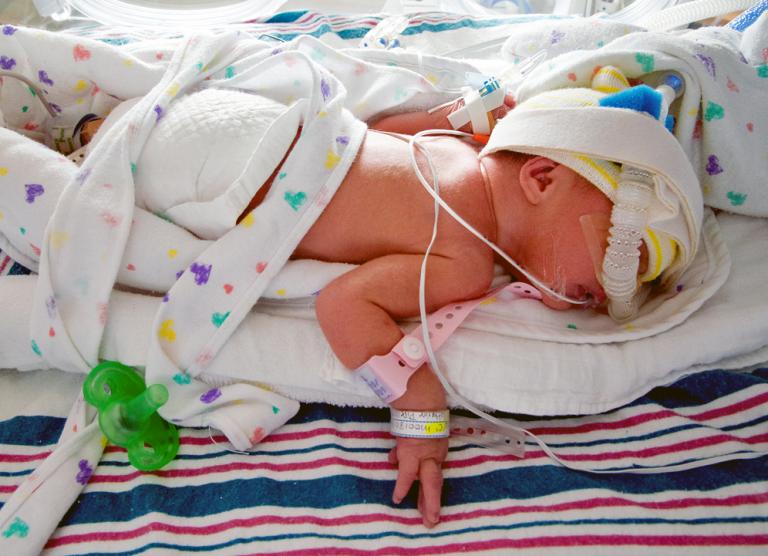![By Carin Araujo, http://www.prtc.net/~carin (Stock.xchng #197853) [Copyrighted free use], via Wikimedia Commons](https://wp-media.patheos.com/blogs/sites/533/2015/02/Baby-300x200.jpg)
The study assembles various survey data, from the National Survey of Family Growth, To begin with, pregnancy rates are higher for poor single women than the better-0ff: 9.0% of single women, ages 15 – 44, with incomes below the poverty level were pregnant in the year prior to being surveyed, compared to much lower rates for other women:
Income as%
of Poverty Level Pregnancy Rate
< 100% 9.0%
100% – 200% 5.1%
200% – 300% 5.8%
300% – 400% 4.4%
400%+ 2.9%
At the same time, single women of all economic levels report nearly identical levels of sexual activity — that is, about 2/3s report having had sex at least once in the last year. (Though that’s not much of a marker as to frequency.)
And poor single women (<100%) are twice as likely to have reported not using contraception as the best-off category, 16% vs. 8%.
The real surprise? The abortion rates, that is, the percent of those women who reported a pregnancy, who had an abortion, in the year prior to the survey.
Income as % of FPL Abortion Rate
< 100% 8.6%
100% – 200% 7.8%
200% – 300% 16.2%
300% – 400% 8.0%
400% + 31.9%
This last figure is so much higher than the others that one wonders if there was a mistake in their data! — unless this 400% category really had a more gradual increase, say, in income brackets 400 – 500%, 500 – 600%, and so forth, that is hidden here. The middle one looks odd, too, and I can’t think of any similar explanation, unless the sample sizes were simply so small as to have these sorts of jumps (the report doesn’t say). Perhaps this income bracket is largely composed of women who are just beyond eligibility for welfare benefits, but don’t yet have a financial cushion, so they have a lot more to lose with an unexpected pregnancy?
The conclusion that Brookings draws from these figures is fairly simplistic: they assume that the only differences between poor and better-off women are financial, so that birth rates for poor women would be reduced if only we redoubled our efforts to make free contraception available (ignoring the fact that free contraception is already available, via Medicaid, Title 9 programs, and mandatory no-out-of-pocket-cost contraception coverage in health insurance plans), and provided free abortions as well, because they assume that better-off women abort more often solely because they have the ready cash to pay for the abortion.
The morally stunted part? The report several times speaks of abortion as an important ingredient in the fight against unintended pregnancy, and ultimately concludes:
But access to affordable abortion also matters, and this is currently limited for many low-income women. There are of course strongly-held views on abortion, but it should be hard for anyone to accept such inequalities by income, especially when they are likely to reverberate across two or more generations. Abortion is a difficult choice, but it is not one that should be influenced by financial status.
Really? The half of America which believes that abortion is morally wrong should be willing to fund abortions for poor women, despite their opposition, in the name of “equality”?
The poorly-reasoned part?
To begin with, the assumption that the only differences between poor and better-off single women are financial.
It’s been reported multiple times — see this Slate article, for instance, or a recent piece at California Catholic Conference — that the decline in marriage is a a poor/working-class issue, and that middle-class marriages are in much better shape. Per the California Catholic piece, summarizing recent research,
The rise of non-marital births, which started in low-income communities in the 1960s and 1970s, has now reached the working middle class. More and more young adults with less education in working-class neighborhoods are “having children in brittle cohabiting unions,” and those who do marry are at a high risk of divorce.
In affluent neighborhoods where many college-educated Americans live, “marriage is alive and well and stable families are the rule.” Nearly all young Americans with college degrees, although they may cohabit with their partners, marry before having their first child. The divorce rate in this group has declined to levels not seen since the early 1970s.
Among moderately-educated Americans – those who have completed high school but not college—marriage has declined. This group constitutes 51 percent of the young adult population, aged 25-34. Moderately educated middle-class young adults are dramatically more likely than highly educated Americans to have children outside of marriage. They are more than twice as likely to divorce as college-educated Americans during the first ten years of marriage, and the divorce divide between these two groups has been growing since the 1970s.
[UPDATE: this link doesn’t seem to work. Here’s the original study that this site cited: “The Marginalization of Marriage
in Middle America,” by W. Bradford Wilcox and Andrew J. Cherlin.]
In other words, single poor and single better-off women are apples and oranges. Single poor women are more likely to be in relationships that they, for many reasons, haven’t formalized with marriage. True, these relationships are not as durable and stable as marriage, and don’t offer the partners the same sort of mutual support, but nonetheless, there is more likely to be enough support to mean that, in some real sense, their children are born into real families, with a father clearly in the picture. Wealthier single women, on the other hand, are more likely to be “truly” single, with no man in the picture except as a dating relationship, because their longer-term relationships are more likely to become marriages.
One can also speculate that, while they report that poor women are nearly as likely to say they would be “upset” (to an unspecified degree) as better-off women, it is those better-off women whose lives offer more of a sense of control in the first place — a stable job, the mortgage reliably paid, a car break-down an inconvenience but not a serious financial hardship — and who may be more unwilling to tolerate loss of control. (Just read the Slate comments on any article on contraception/pregnancy/abortion, and count the number of women who say, “I know without a doubt that if I got pregnant, I would get an abortion without hesitation.”)
And, last but not least, Brookings seems not to understand the concept of being pro-life, and giving birth to a child, no matter the hardship, because abortion is a grave wrong. Is it not possible that poor and working-class women are more likely to be pro-life than better-off women, simply as one element of a cluster of cultural differences?












